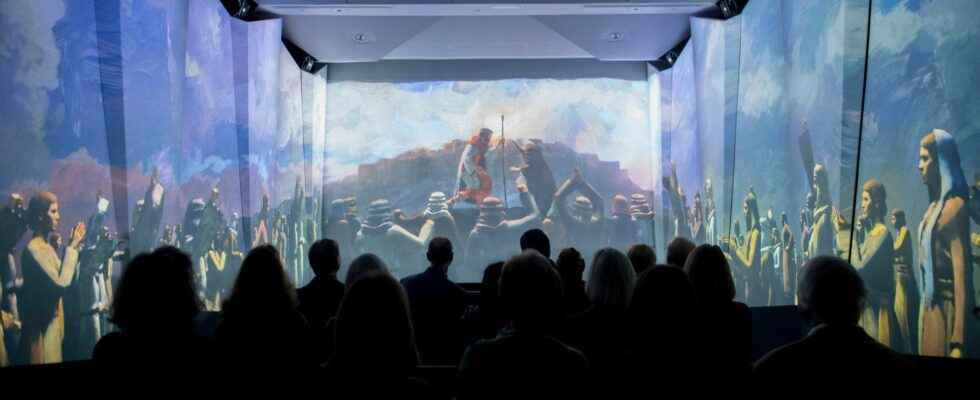The videos of contemporary artists shown in the exhibitions are not always very pleasant to watch. This is where they differ from commercial cinema, which, needing a large number of spectators, is constantly looking for their physical (armchair, darkness) and intellectual (good guys against bad guys) comfort. Even going so far as to offer them a treat (popcorn and pretty cones). Art videos proceed from the opposite approach. We can rarely sit down, or else the hard way, we never really know what it’s about (no known stars, no history between a father and a son).
There are exceptions to this rule, such as a mixture of genres, a quirk. The dam is a film by Ali Cherri, a contemporary Lebanese artist whose works have been exhibited around the world; they mainly consist of combining archaeological objects with contemporary objects, but less funny than what Bertrand Lavier did almost half a century ago. The dam is Ali Cherri’s first feature film. It hits theaters next week as a commercial film with a story and stars. There are some very nice plans. But beauty is that which is unaware of itself, and as soon as it knows itself beautiful it becomes aesthetic, and that spoils everything.
I did not understand the story. I saw a guy with a boil on his back who molds and unmolds bricks, he borrows a motorbike and drives in the desert to go and build a totem. It takes place in Sudan, there is water gushing out of the valves of a dam (hence the title). Is it that water that makes the totem that the guy with the boil was building collapse? Is this a film where you have to tell your own story? That’s the concept? As I tell Dora when she gets on my nerves: the war in Lebanon doesn’t explain everything.
Expensive food
To wash my eyes, I went back to see Coronation of Sesostris from Cy Twombly to the Pinault collection. In the room dedicated to her, two bimbos of 16 and 17 years old, already quite botoxed, the minishorts flush with the candy, were taking selfies of influencers in front of the paintings, taking increasingly sexy poses. The keeper of the room, troubled, ended up intervening. “You can’t photograph works like that. – Really? But why?” They were right, the callipyge devils: everyone takes pictures, why not them.
Arrived at the end of the room, glued that I was in front of the last painting, I was approached by a guy: “I made some like that when I was 3 years old”, he confides to me, mockingly .
I went down to the basement of the Bourse de commerce to see the video of Jonathan de Andrade. Of a reasonable duration, O Peixe (The Fish) shows fishermen rowing or sculling aboard primitive craft along the shores of the Amazon. Jonathas de Andrade films them one after the other, catching fish weighing 10 to 15 kilos, with a net, a hook, a harpoon. By a kind of thanatological ritual imposed by the videographer, they hug the dying fish against their chest, tenderly, cheek to cheek, they caress it, some even giving it a kiss. The fish jumps, until death, peaceful, wins. It’s moving, erotic, beautiful as can be certain moments of bullfighting, when the bull has understood, and that he accepts that the bullfighter performs the sad gesture that will put an end to his sacrifice.
That each of these fishermen from the Nordeste lent themselves so willingly to this staging shows, over the course of the water which flows between the palm trees and the bougainvilleas, the innocence of the fishermen, the beauty of their gesture, the delicacy with which they treat their prey. Expensive food. There too, there is no history, in the Hollywood sense of the term, except that offered by death at work.
